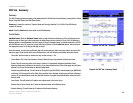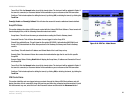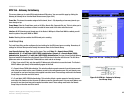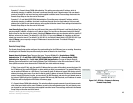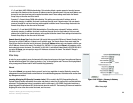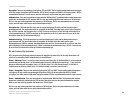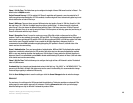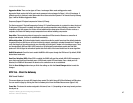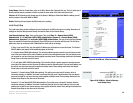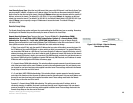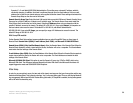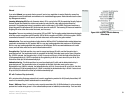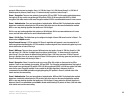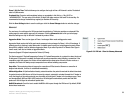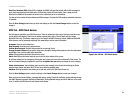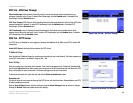
48
Chapter 5: Setting Up and Configuring the Router
VPN Tab - Client to Gateway
10/100 8-Port VPN Router
Tunnel Name: Enter the Tunnel Name, such as LA Office, Branch Site, Corporate Site, etc. This is to allow you to
identify multiple tunnels, and does not have to match the name used at the other end of the tunnel.
Interface: All VPN tunnels go out through one of the Router’s WAN ports. When Dual-WAN is enabled, you will
have the option of two ports: WAN1 or WAN2.
Enable: Checking this box enables the VPN tunnel you’re creating.
Local Group Setup
The Local Group Setup section configures the local settings for the VPN tunnel you are creating. Remember, all
settings for the Local Group must be exactly the same as those for the Remote Group.
Local Security Gateway Type: There are five types. They are IP Only, IP + Domain Name (FQDN)
Authentication, IP + E-mail Addr. (USER FQDN) Authentication, Dynamic IP + Domain Name (FQDN)
Authentication, Dynamic IP + E-mail Addr. (USER FQDN) Authentication. The type of Local Security Gateway
Type must match the Remote Security Gateway Type of VPN devices in the other end of tunnel. The first three
options are easier to use because the IP Addresses are static and do not change.
IP Only: If you select IP Only, only the specific IP Address set will be able to access the tunnel. The Router’s
WAN IP address (set above) will automatically appear in this field.
IP + Domain Name (FQDN) Authentication: This selection affords a greater amount of security because each
side of the tunnel must use the same IP Address as well as the same domain name. Only one domain name
can be used for one tunnel and may not be applied to another tunnel.These settings must match the Remote
Group Setup on the other end of the tunnel.
IP + E-mail Addr. (USER FQDN) Authentication: This selection affords a greater amount of security because
each side of the tunnel must use the same IP Address as well as the same email. Only one email address can
be used for one tunnel and may not be applied to another tunnel.These settings must match the Remote
Group Setup on the other end of the tunnel.
Dynamic IP + Domain Name (FQDN) Authentication: This setting uses a dynamic IP address, which is
constantly changing. In addition, the tunnel is confirmed through use of a domain name. Only one domain
name can be used for one tunnel and may not be applied to another tunnel.These settings must match the
Remote Group Setup on the other end of the tunnel.
Dynamic IP + E-mail Addr.(USER FQDN) Authentication: This setting uses a dynamic IP address, which is
constantly changing. In addition, the tunnel is confirmed through use of an email address. Only one email
address can be used for one tunnel and may not be applied to another tunnel.These settings must match the
Remote Group Setup on the other end of the tunnel.
Figure 5-50: VPN tab - Client to Gateway
Local Group Setup
Figure 5-49: VPN tab - Client to Gateway



